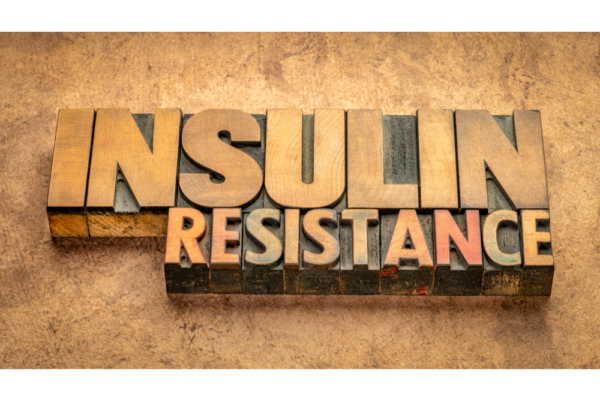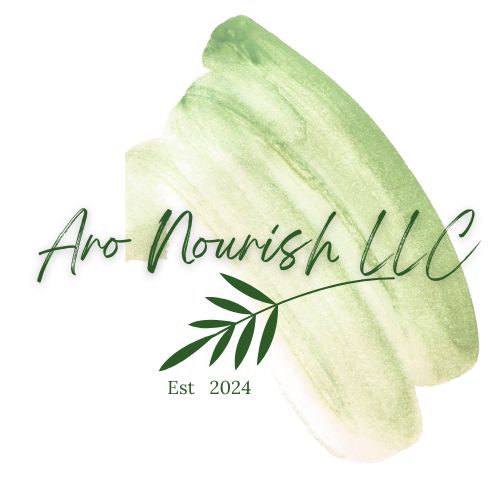Insulin Resistance

What is Insulin?
To know what insulin resistance is, it is first important to know what insulin itself is. Insulin is a peptide hormone produced by an organ located behind the stomach called the pancreas. There are areas within the pancreas called the Islets of Langerhans which are made up of special types of cells called beta cells. Beta cells are the cells that produce insulin. Insulin is considered to be the main anabolic hormone of the body.
After insulin is produced by the beta cells in the Islets of Langerhans, it is released from the pancreas into the bloodstream so that it can travel to different areas of the body. Insulin must travel to the body’s tissues to perform its functions. Under normal physiological conditions, insulin functions through the following process:
- When you eat food, this food is broken down into sugar (specifically glucose), which enters your bloodstream.
- When glucose enters your bloodstream, this sends a signal to your pancreas to release insulin.
- When insulin is released by the pancreas and transported to the body’s tissues via the bloodstream, it helps glucose in your blood enter your body’s tissues (including muscle, fat, and liver cells) so that your body can use this glucose for energy or store it for later use.
- Insulin acts like a key to help the glucose enter the cells.
- When the glucose in your bloodstream enters your cells and leaves your bloodstream, the levels of glucose in your bloodstream decrease, which, in response, sends a signal to your pancreas to decrease the levels of insulin being released.

What is Insulin Resistance?
Insulin resistance, also known as impaired insulin sensitivity, happens when cells in your muscle, fat, and liver don’t respond as they usually do to insulin. Insulin resistance can be temporary or chronic and in many cases is treatable and reversible. When your body becomes insulin resistant, the cells in your muscles, fat, and liver do not respond well to insulin and have trouble taking up glucose from your blood. As a result, your pancreas makes more insulin to help glucose enter your cells.
Video Source: Canva
How common is insulin resistance?
It is not exactly clear what causes insulin resistance. Insulin resistance is thought to be a multifactorial condition. You do not have to be overweight to develop insulin resistance, and you cannot tell whether someone is insulin resistant just by looking at them. People who have certain genetic or lifestyle risk factors are more likely to develop insulin resistance and, over time, prediabetes. Risk factors that increase your chances of developing insulin resistance include:
- Having a close relative (a parent, brother, or sister) with diabetes
- Having certain health conditions such as high blood pressure and high cholesterol levels.
- If you have a history of heart disease or stroke.
- If you are of a certain ethnicity (such as African American, Indian, Native Hawaiian, American Indian, Asian American, Hispanic, or Pacific Islander)
- Being the age of 45 or older
- Not engaging in adequate physical activity
- If you have polycystic ovarian syndrome (PCOS)
How is insulin resistance diagnosed?
Insulin is difficult to diagnose because, currently, no test measures the amount of insulin resistance your body has. As long as your pancreas produces enough insulin to overcome the insulin resistance, you likely won’t experience any signs or symptoms. The gold standard for measurement of insulin resistance is the hyperinsulinemic-euglycemic glucose clamp technique. This research technique has limited clinical applicability; however, several clinically useful surrogate measures of insulin resistance include HOMA-IR, HOMA2, QUICKI, serum triglyceride, and triglyceride/HDL ratio.
Your healthcare provider may order the following blood tests if you have insulin resistance that has resulted in prediabetes or diabetes:
- A fasting plasma glucose (FPG) or a glucose tolerance test (GTT): is a test that may be used to screen for, diagnose, or monitor prediabetes.
- Glycated hemoglobin A1c (A1c): a test telling you what your average blood glucose levels are over the past three months.
- Lipid panel: a group of tests that measure specific lipids in your blood, such as total cholesterol, LDL cholesterol, HDL cholesterol, and triglycerides.
In addition, your healthcare provider will take into account the individual risk factors that may increase your risk of developing insulin resistance.
How can I prevent insulin resistance?
Although there is no cure-all answer to prevent insulin resistance and there are certain non-modifiable risk factors that increase your risk of developing insulin resistance, there are steps you can take to reduce the risk of insulin resistance developing.
- Eating a healthy diet: Eating a healthy and balanced diet rich in whole foods, fruit, vegetables, and lean protein may lead to a decreased risk of insulin resistance developing over time.
- Carbohydrate Counting: Carbohydrates are essential for body functioning especially for brain health. So, instead of avoiding carbs, learning to count carbs can be a great way to fit your favorite foods in the plan.
- Engaging in regular exercise: Engaging in regular exercise such as walking, running, resistance training, biking, and swimming may lead to a decreased risk of developing insulin resistance.
- Better sleep
- Stress Management
- Adequate hydration
How is insulin resistance reversed?
Practicing these lifestyle habits can help prevent insulin resistance, improve insulin sensitivity and may reverse existing insulin resistance, reducing your chances of developing prediabetes and type 2 diabetes over time. Following a healthy diet, mindful eating and engaging in healthier lifestyle habits such as regular exercise, stress management, and adequate hydration can help prevent the complications associated even if you are diagnosed with type 2 diabetes.
In conclusion,
Insulin resistance is a complex and multifactorial condition. If you are looking for individualized support regarding preventing insulin resistance or treating existing insulin resistance, make sure to speak with your doctor or registered dietitian for individualized advice. Here at Aarthi Nutrition, we specialize in helping you holistically reverse insulin resistance and nurture sustainable habits to help you reach your health goals.
References:
1. Lee SH, Park SY, Choi CS. Insulin Resistance: From Mechanisms to Therapeutic Strategies. Diabetes Metab J. 2022;46(1):15-37. doi:10.4093/dmj.2021.0280
2. Freeman AM, Acevedo LA, Pennings N. Insulin Resistance. [Updated 2023 Aug 17]. In: StatPearls [Internet]. Treasure Island (FL): StatPearls Publishing; 2023 Jan-. Available from: https://www.ncbi.nlm.nih.gov/books/NBK507839/Freeman AM, Acevedo LA, Pennings N. Insulin Resistance. [Updated 2023 Aug 17]. In: StatPearls [Internet]. Treasure Island (FL): StatPearls Publishing; 2023 Jan-. Available from: https://www.ncbi.nlm.nih.gov/books/NBK507839/
